20 Wild Animals in Tanzania [Wildlife in Tanzania]
Want to know more about the wildlife in Tanzania?
Discover 20 wild animals in Tanzania in this post, as well as interesting facts about them. 🇹🇿
Learn All About Tanzanian Animals
Ready to learn all about Tanzanian animals?
I’ve always been fascinated by animals and by how they can be so different from one country to another. In this guide, we’ll focus on the many animals Tanzania has on the land, in the sky, and underwater.
I’ve split the guide into 5 categories:
- Native animals of Tanzania
- Endangered animals of Tanzania
- What is Tanzania national animal?
- How many animals native to Tanzania?
- What is the most common animal in Tanzania?
Let’s dive in right away with our first category!
Native Animals from Tanzania
Tanzania is an African country located in the eastern part of the continent, within the African Great Lakes region. It is a very important place for hominid fossils and the study of evolution, is the second-most populous country located entirely south of the Equator, has the largest lake (Lake Victoria) and the deepest lake (Lake Tanganyika) in the continent, and used to be a German colony. It is bordered by Mozambique, Malawi, the Democratic Republic of the Congo, Burundi, Rwanda, Kenya, Uganda, Zambia, and the Comoros Islands, and although its largest city is Dar es Salaam, its capital is Dodoma, which counts more than 213,000 inhabitants (but more than 2,245,000 if you include the metropolitan area).
An interesting part of the country that I wanted to tackle is its wildlife. In light of that, I have listed the best of it, and I hope you will love learning what animals live in Tanzania.
Here’s the Tanzania animals list.
1. Black rhinoceros
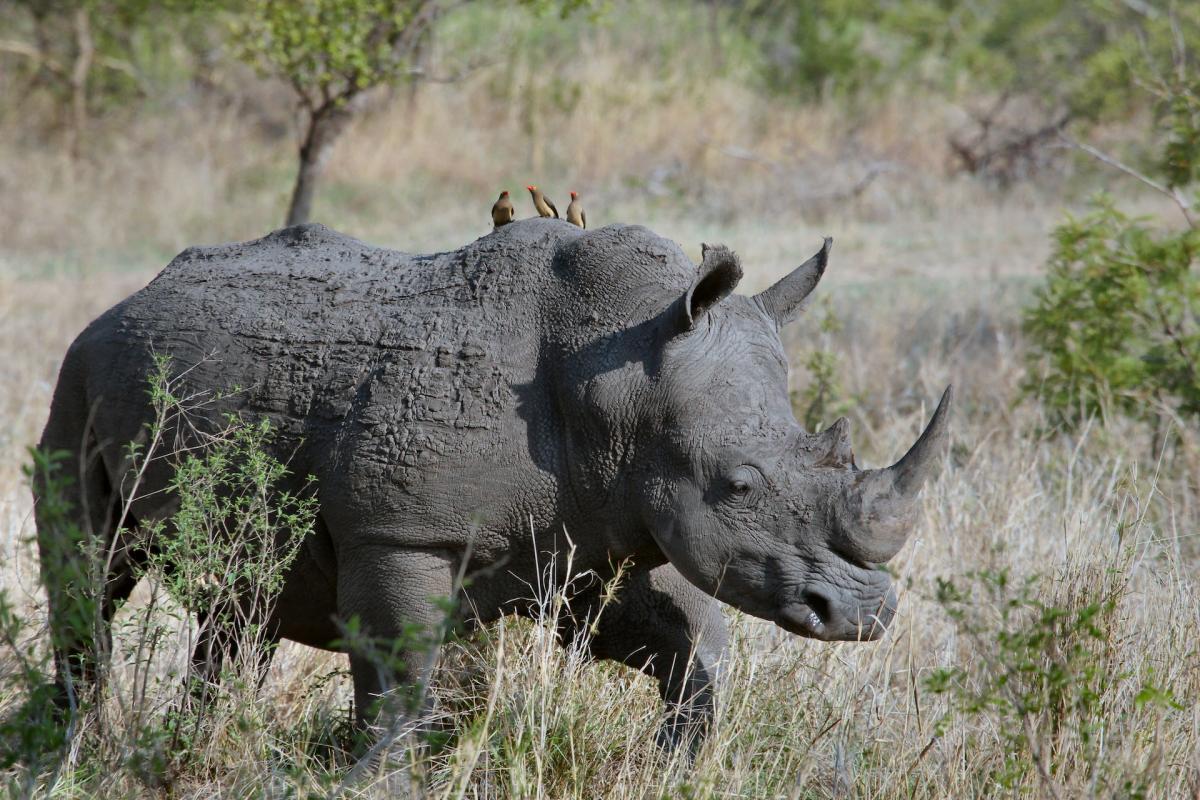
- Name: Black rhinoceros
- Scientific name: Diceros bicornis
- Conservation status:
The black rhinoceros, also known as the hook-lipped rhinoceros, is a species of rhinoceros native to southern and eastern Africa. Despite its name, it is brown to gray.
Although its southwestern subspecies is merely listed as near threatened with extinction, the black rhino is on the whole a critically endangered species; in fact, 3 of its subspecies have already been declared extinct, including the western black rhinoceros which disappeared in 2011.
2. African bush elephant
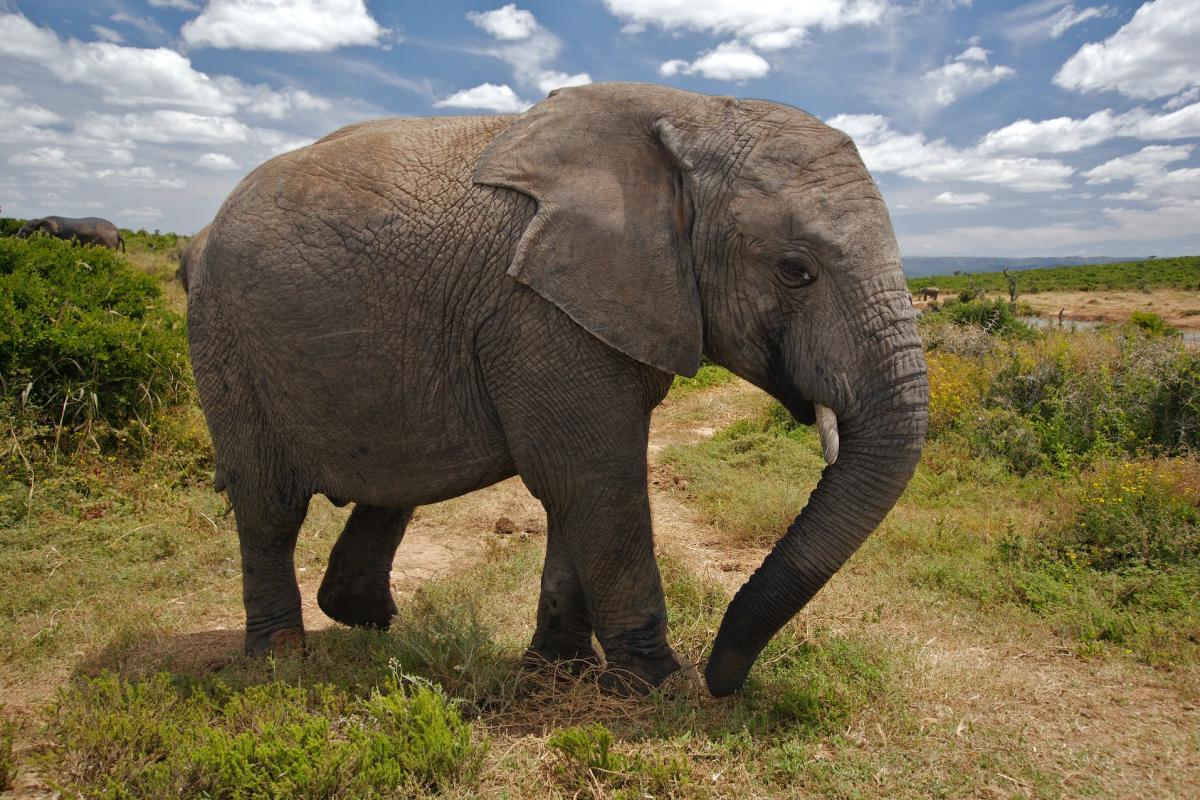
- Name: African bush elephant
- Scientific name: Loxodonta africana
- Conservation status:
The African bush elephant, also known as the African savanna elephant, is the largest terrestrial animal on the planet, and one of the most iconic animals from the African continent. Sadly, it is seriously endangered due to habitat loss and poaching for its ivory and meat.
This elephant lives in the seasonally flooded grasslands, wetlands, woodlands, temperate and subtropical forests, and agricultural land of Tanzania, at an elevation of up to 2,500 m / 8,200 ft.
3. Thomson’s gazelle
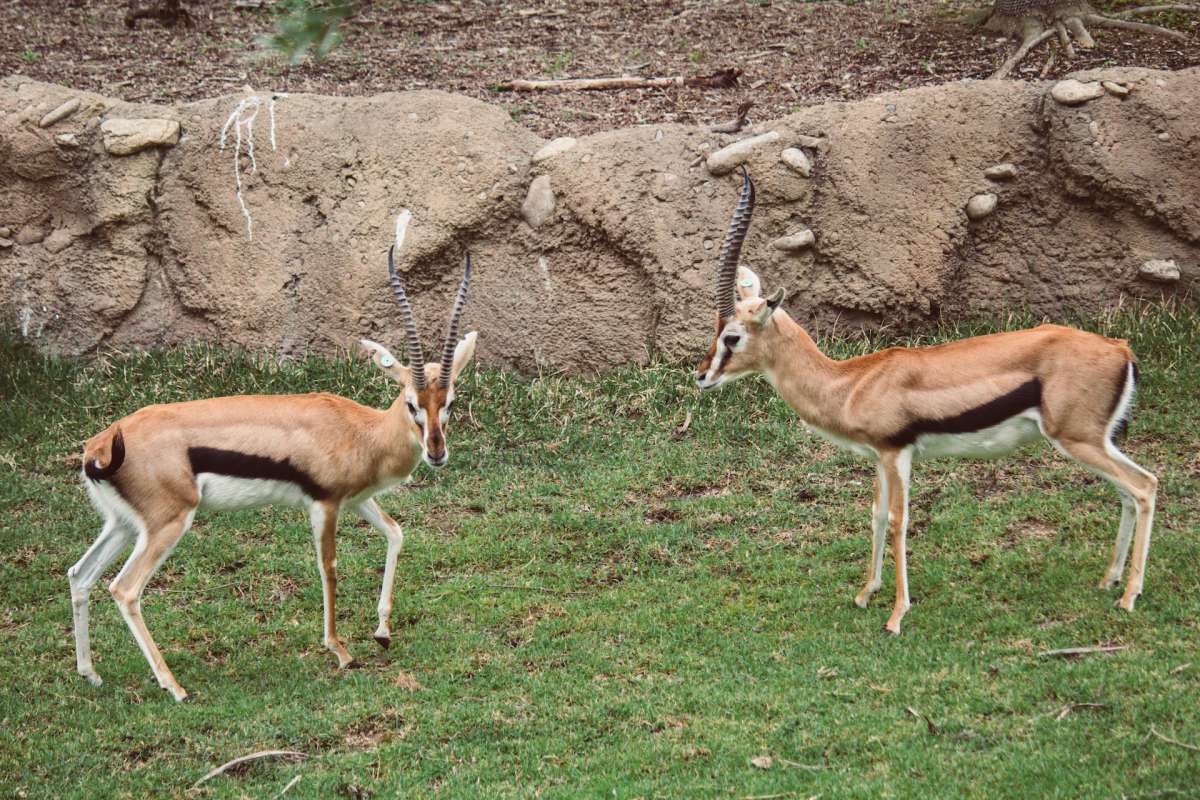
- Name: Thomson’s gazelle
- Scientific name: Eudorcas thomsonii
- Conservation status:
Thomson’s gazelle is one of the most famous species of gazelle on the planet. It is also one of the fastest animals in Africa, reaching incredible speeds of up to 90 km/h / 55 mph, only rivaled by the cheetah (also its main predator), the pronghorn, and the springbok.
Tanzania is one of the main homes of Thomson’s gazelle, particularly in the Serengeti region. There, it lives in short grassland with a dry foundation but migrates to dense woodland and tall grassland.
4. Crested porcupine
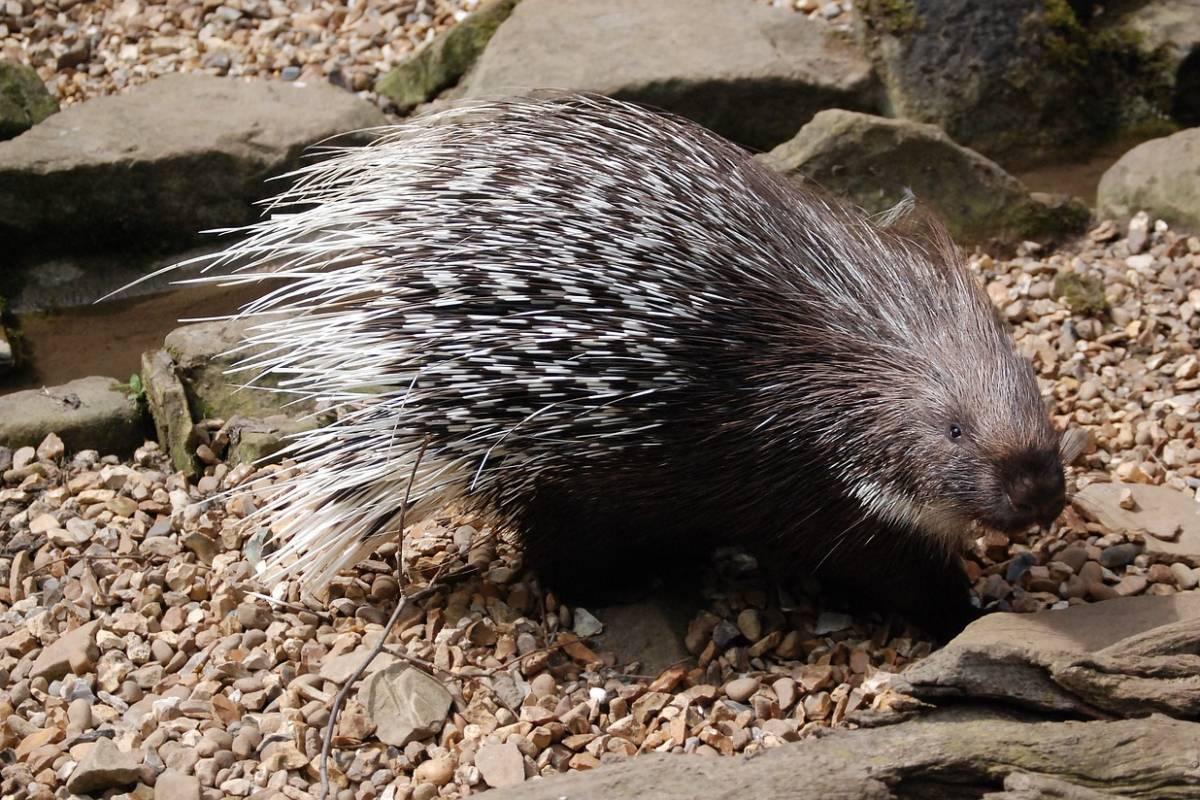
- Name: Crested porcupine
- Scientific name: Hystrix cristata
- Conservation status:
The crested porcupine, also known as the African crested porcupine, is a species of rodent native to Italy, north Africa, and sub-Saharan Africa. Its range is very peculiar, being found in several, small areas around sub-Saharan Africa, possibly including a narrow strip in Central Africa.
This rodent is terrestrial and nocturnal, and although it can swim, it very rarely climbs trees. It has very dangerous quills to defend itself and raises and fans them as a warning when disturbed.
5. Southern African lion
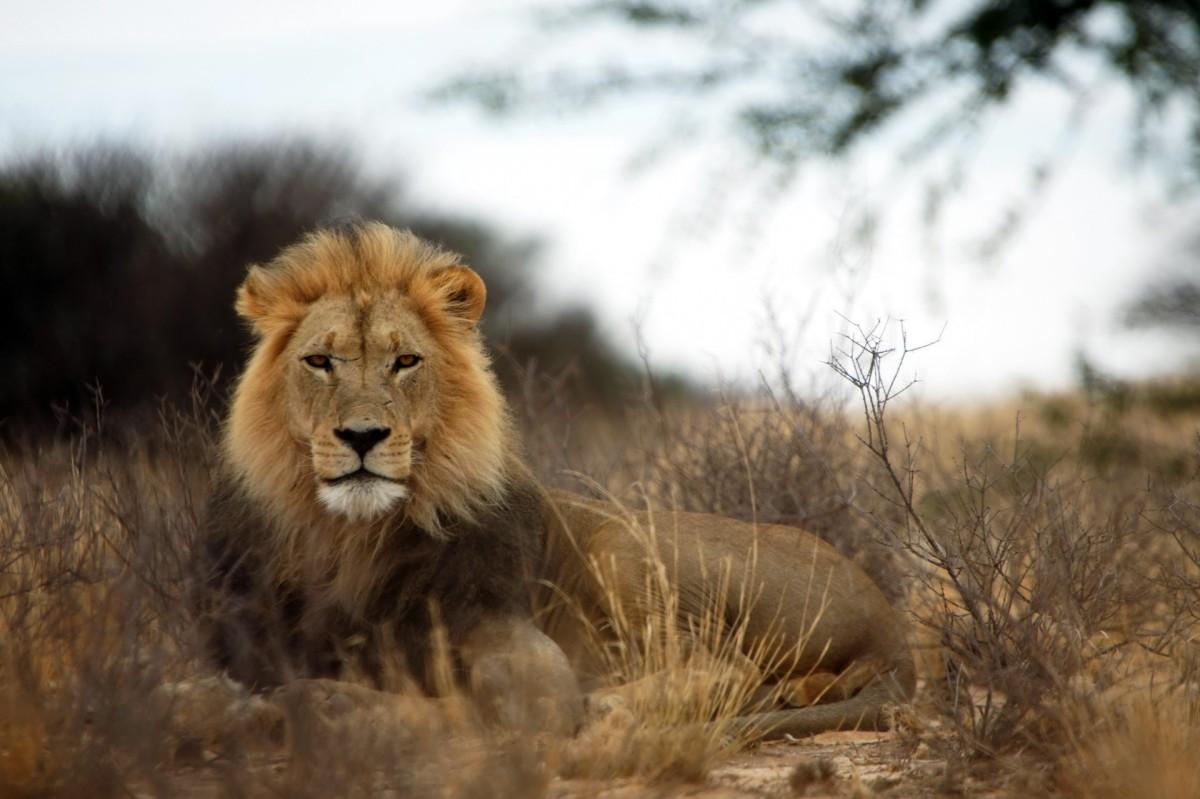
- Name: Southern African lion
- Scientific name: Panthera leo melanochaita
- Conservation status:
The Southern African lion, also known as the Southern lion, is a subspecies of the lion native to eastern and southern Africa. It is seriously threatened by habitat loss and depletion of prey, as well as trophy hunting and persecution.
The Tanzanian populations of the Southern African lion have fragmented over 17 areas. Besides, because of the Rwandan Civil War and the refugee crisis of the 1990s, lion populations seriously declined.
6. Eastern chimpanzee
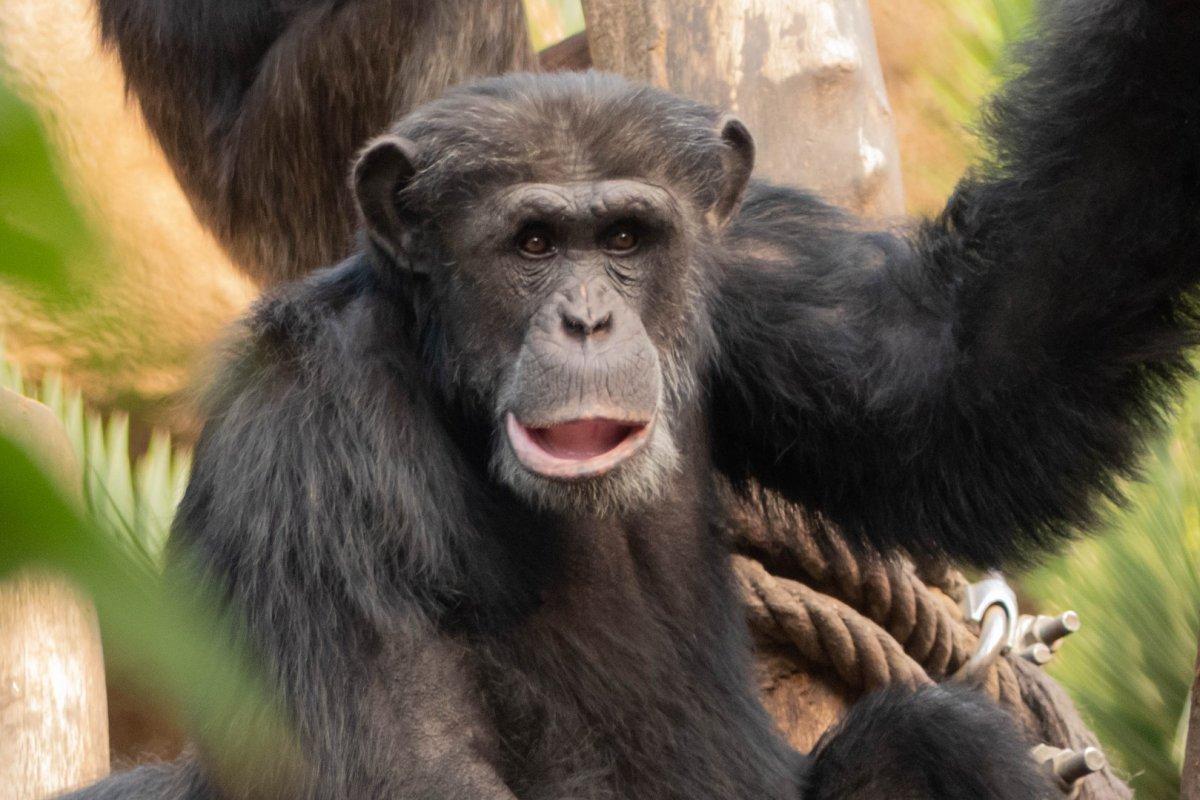
- Name: Eastern chimpanzee
- Scientific name: Pan troglodytes schweinfurthii
- Conservation status:
The eastern chimpanzee is a subspecies of the common chimpanzee, native to central and eastern Africa, which includes Tanzania, the Democratic Republic of the Congo, South Sudan, and Rwanda, among other countries.
Although the chimpanzee is the most widespread and common non-human great ape, its numbers have been seriously declining over the past decades, primarily due to habitat loss and hunting, which is why it is now considered endangered.
7. Burchell’s zebra
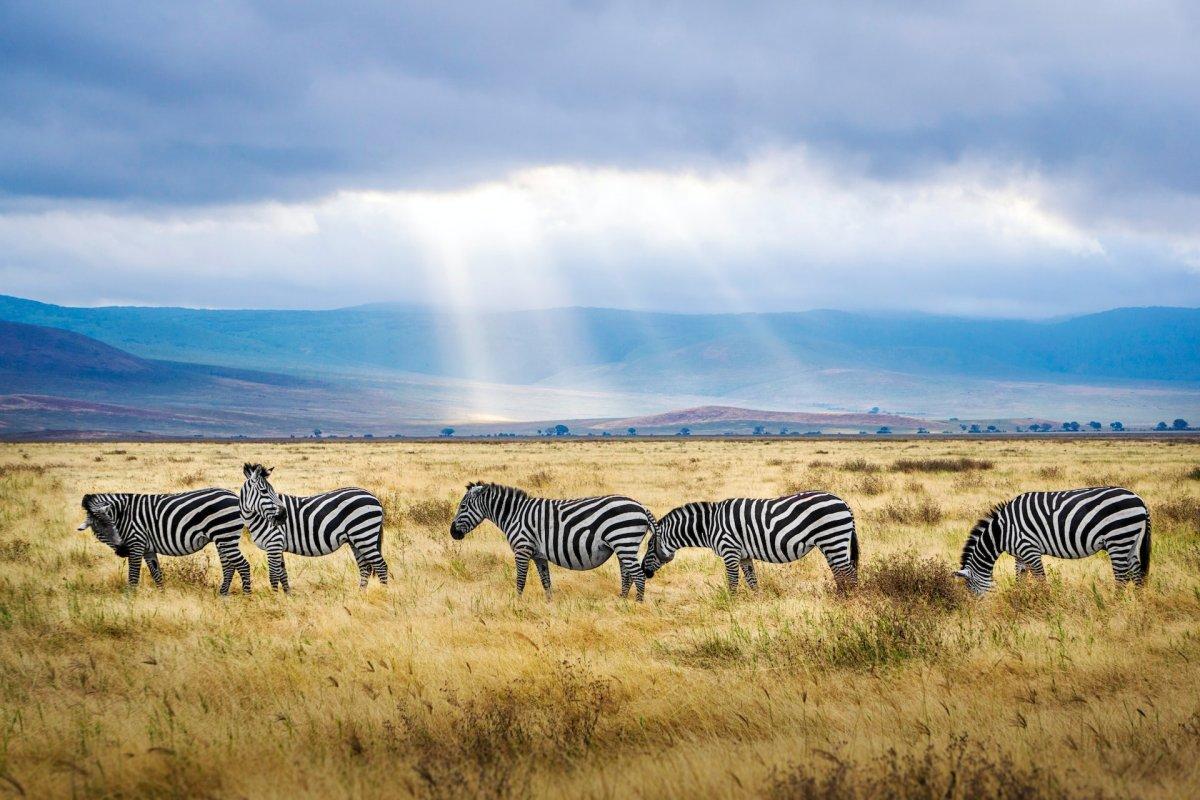
- Name: Burchell’s zebra
- Scientific name: Equus quagga burchellii
- Conservation status:
Burchell’s zebra, also known as the Damaraland zebra, the bontequagga, or the Zululand zebra, is a subspecies of the plains zebra located in the southern parts of Africa. It is the only zebra that can be legally farmed for consumption and is thus very common.
This zebra is particularly interesting for its migration pattern, traveling the most out of any terrestrial animal in Africa and making a round trip of about 500 km / 300 mi!
8. Sable antelope
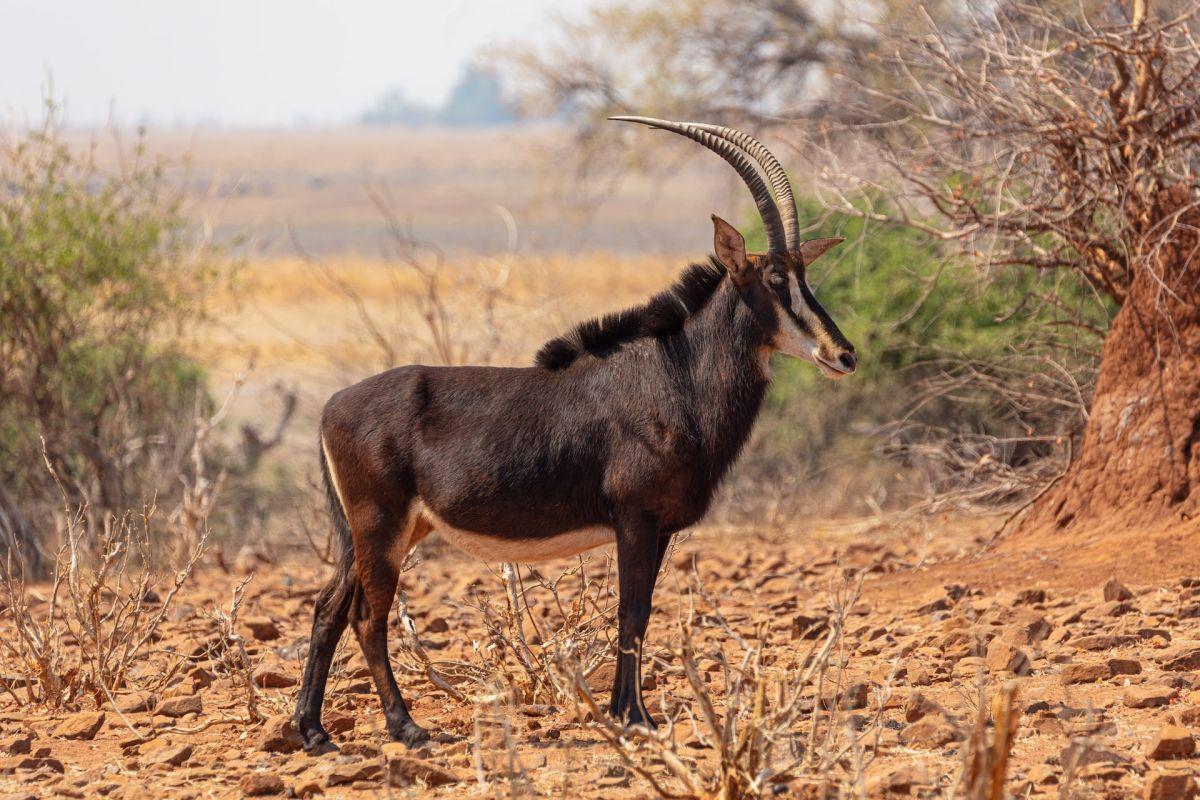
- Name: Sable antelope
- Scientific name: Hippotragus niger
- Conservation status:
The sable antelope is a species of antelope native to the savannas of eastern and southern Africa, with a disjunct population in Angola. Males are much heavier and taller than females, and they have longer horns.
This antelope lives in herds of 10 to 30 individuals, and males fight for females, dropping on their knees and using their horns. When it comes to feeding, the sable antelope eats mid-length grasses, herbs, and leaves.
9. Serval
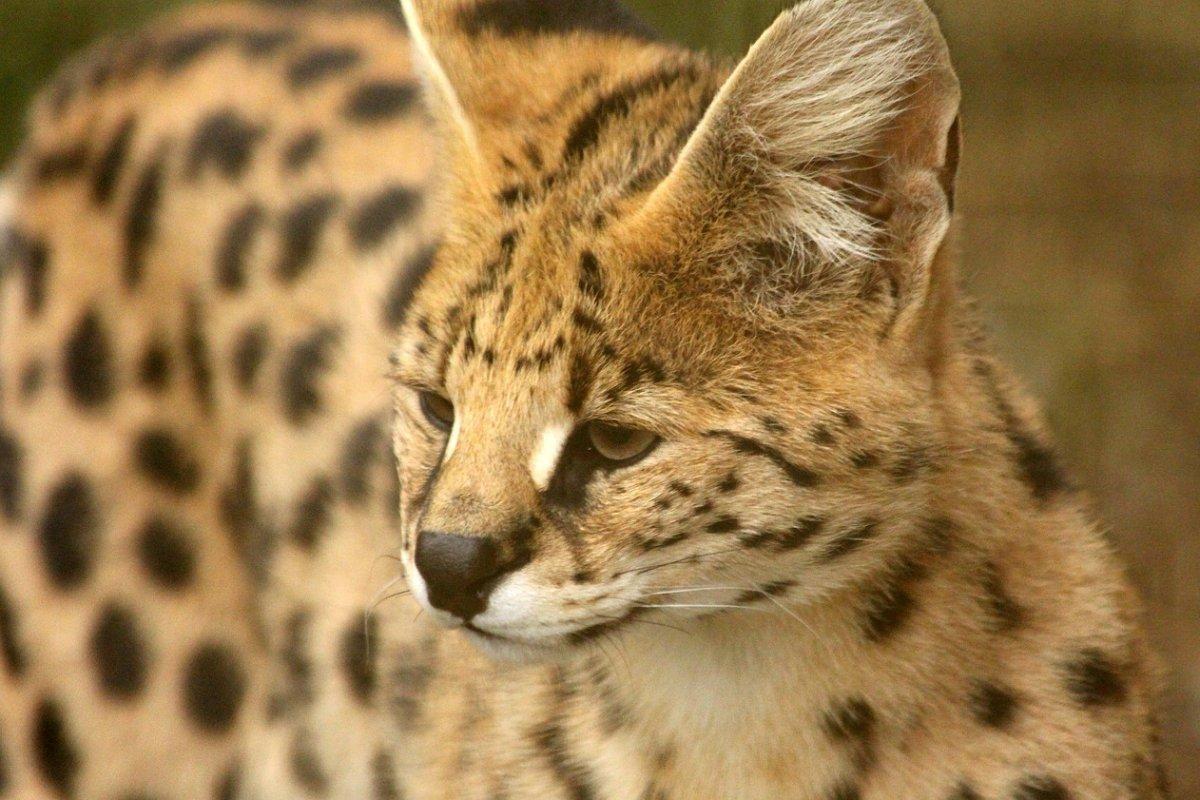
- Name: Serval
- Scientific name: Leptailurus serval
- Conservation status:
The serval is a species of wild cat native to much of sub-Saharan Africa, although it can also be found around the Sahel and North Africa. Because it mostly lives in protected areas throughout its very large range, it is considered of least concern.
Hunting regulations of the serval apply in Tanzania, as well as in other countries such as the Central African Republic, Nigeria, or Algeria.
10. Spotted hyena
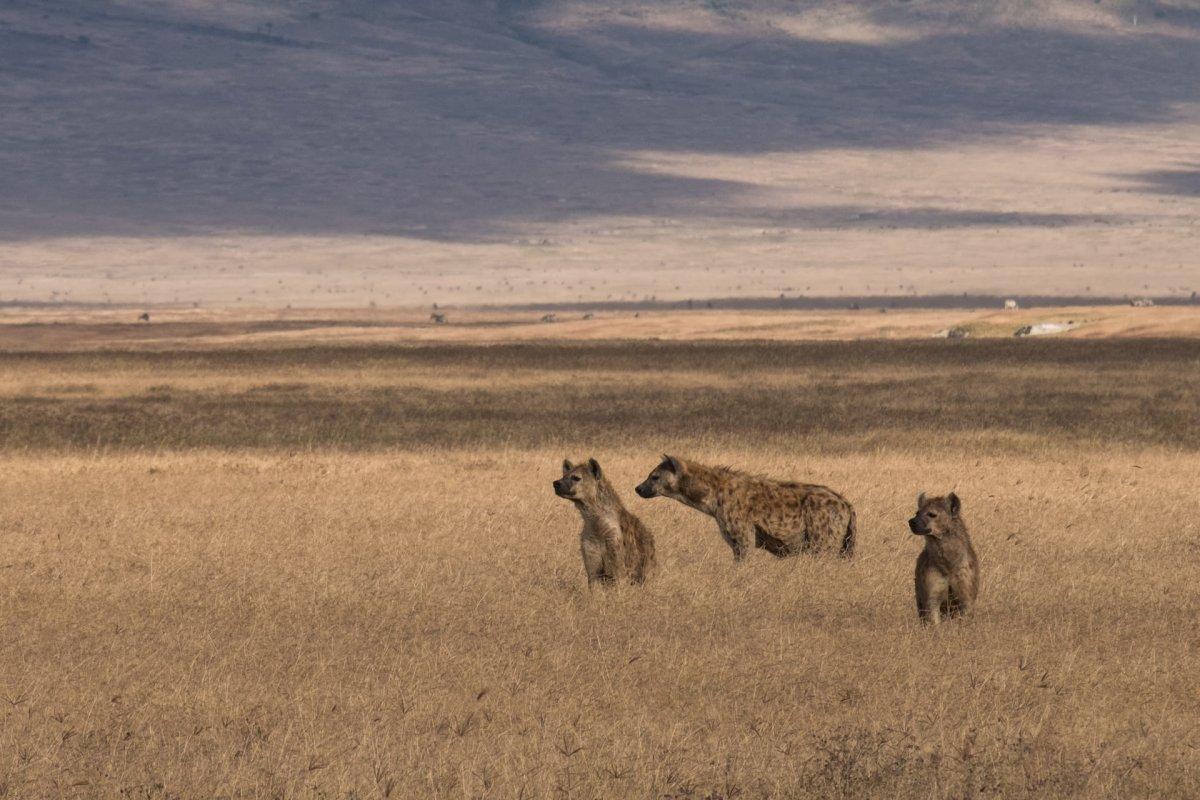
- Name: Spotted hyena
- Scientific name: Crocuta crocuta
- Conservation status:
The spotted hyena, widely known as the laughing hyena, is a species of hyena native to much of sub-Saharan Africa. With up to 47,000 individuals in the world, it is the most common large carnivore in Africa, and one of the most successful species on the planet thanks to its opportunism and versatility.
Opposite to what you may think, the spotted hyena is primarily a hunter and not a scavenger; in Tanzania, it feeds on wildebeests, buffalos, impalas, zebras, reedbucks, kongonis and giraffes.
11. Masai giraffe
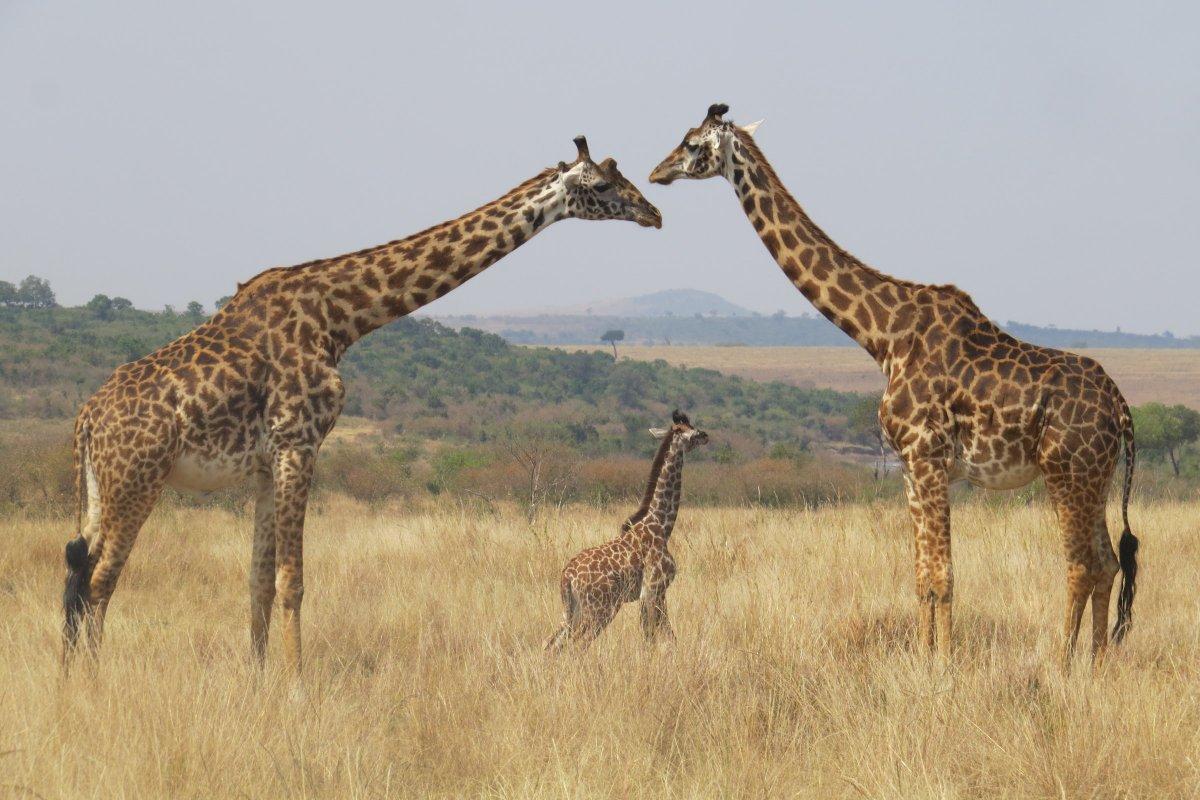
- Name: Masai giraffe
- Scientific name: Giraffa camelopardalis tippelskirchi
- Conservation status:
The Masai giraffe, also known as the Kilimanjaro giraffe, is the national animal of Tanzania, and one of its strongest emblems. Native to eastern Africa, it can be found throughout Tanzania and in central and southern Kenya, where it inhabits savannas.
This giraffe, although protected, is continuously declining due to poaching and habitat loss. There are 32,550 individuals left in the wild, and Tanzania National Parks play a major role in the survival of this species.
12. African buffalo
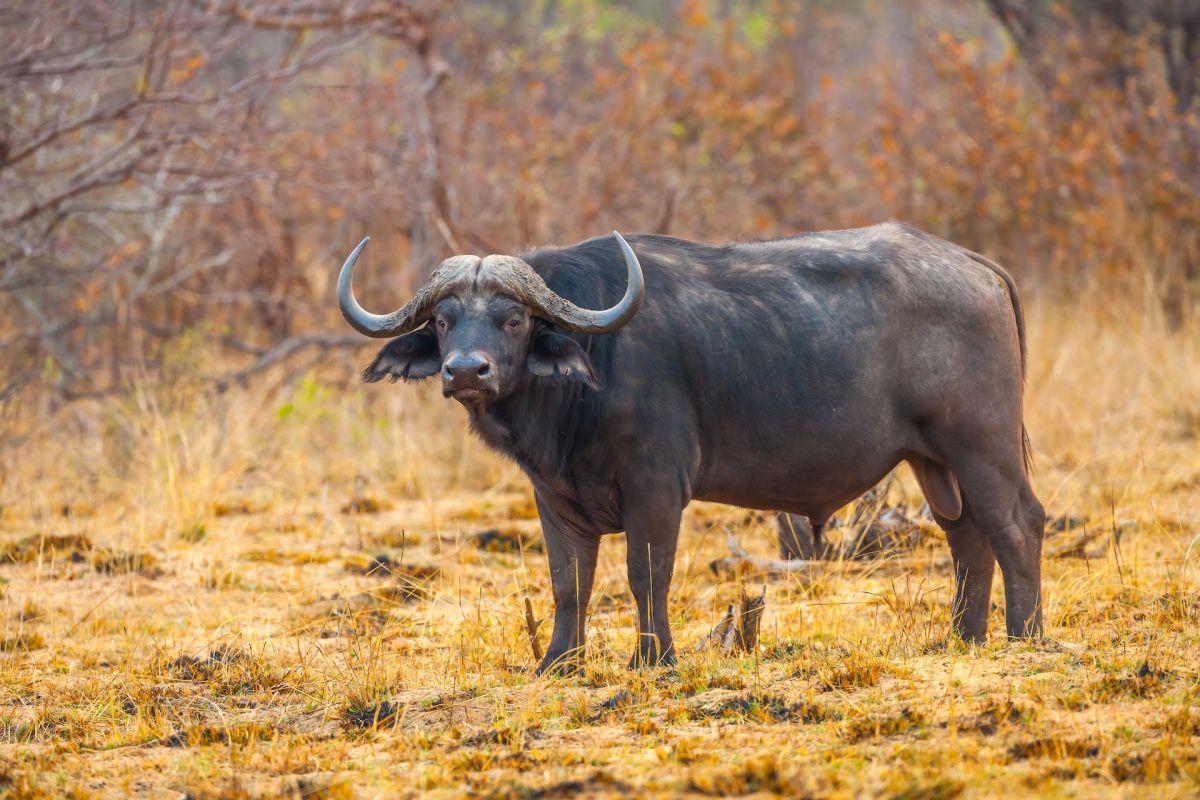
- Name: African buffalo
- Scientific name: Syncerus caffer
- Conservation status:
The African buffalo is a large species of bovine native to sub-Saharan Africa. It is known for being very dangerous, aggressive, and unpredictable, killing more than 200 people every year, which is why it has never been domesticated.
There are about 400,000 African buffalos in the wild, and their numbers are seriously declining, mainly due to trophy hunting and tourism, as well as poaching and droughts.
13. Common warthog
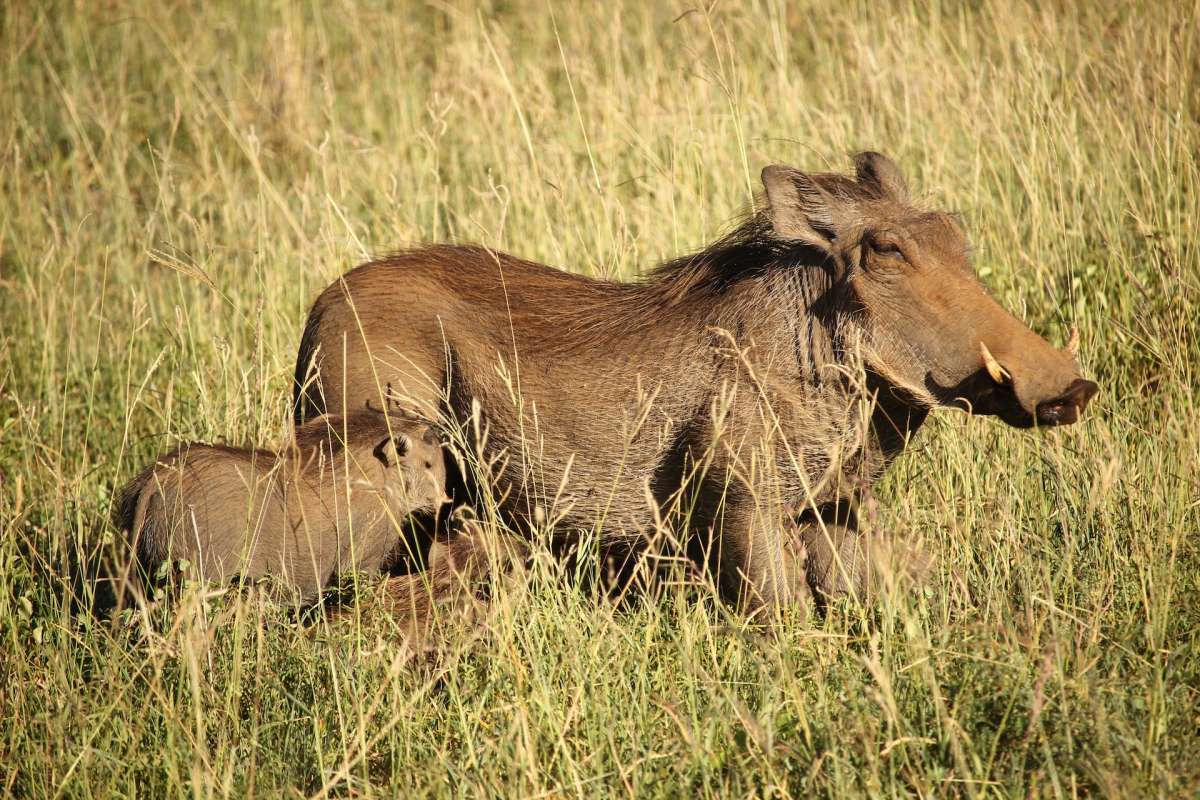
- Name: Common warthog
- Scientific name: Phacochoerus africanus
- Conservation status:
The common warthog is a species of suid native to sub-Saharan Africa. It is the only wild pig adapted to living in the savanna and is a powerful digger and a ferocious opponent (although quick to run away when threatened).
This animal is not territorial and lives in groups known as sounders. While males usually leave the group, they always stay within the home range. They use their tusks to establish status and for courtship.
14. African leopard
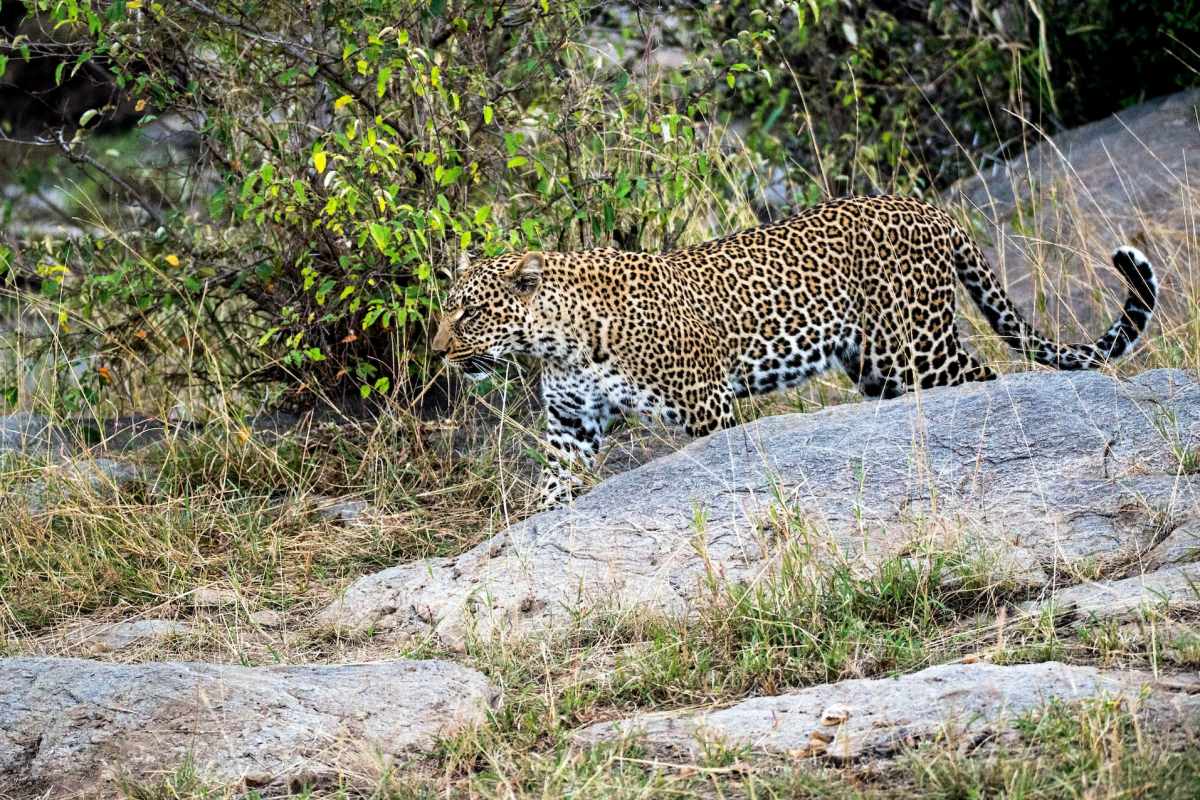
- Name: African leopard
- Scientific name: Panthera pardus pardus
- Conservation status:
The African leopard is the most widespread and common subspecies of the leopard, being found across sub-Saharan Africa, although its range used to be much wider. It is an adaptable carnivore that usually feeds on large ungulates.
The major threats to the African leopard are intense persecution and habitat conversion. In Tanzania, only males are allowed to be hunted, but females still make up for almost a third of the trophies shot.
15. Pemba scops owl
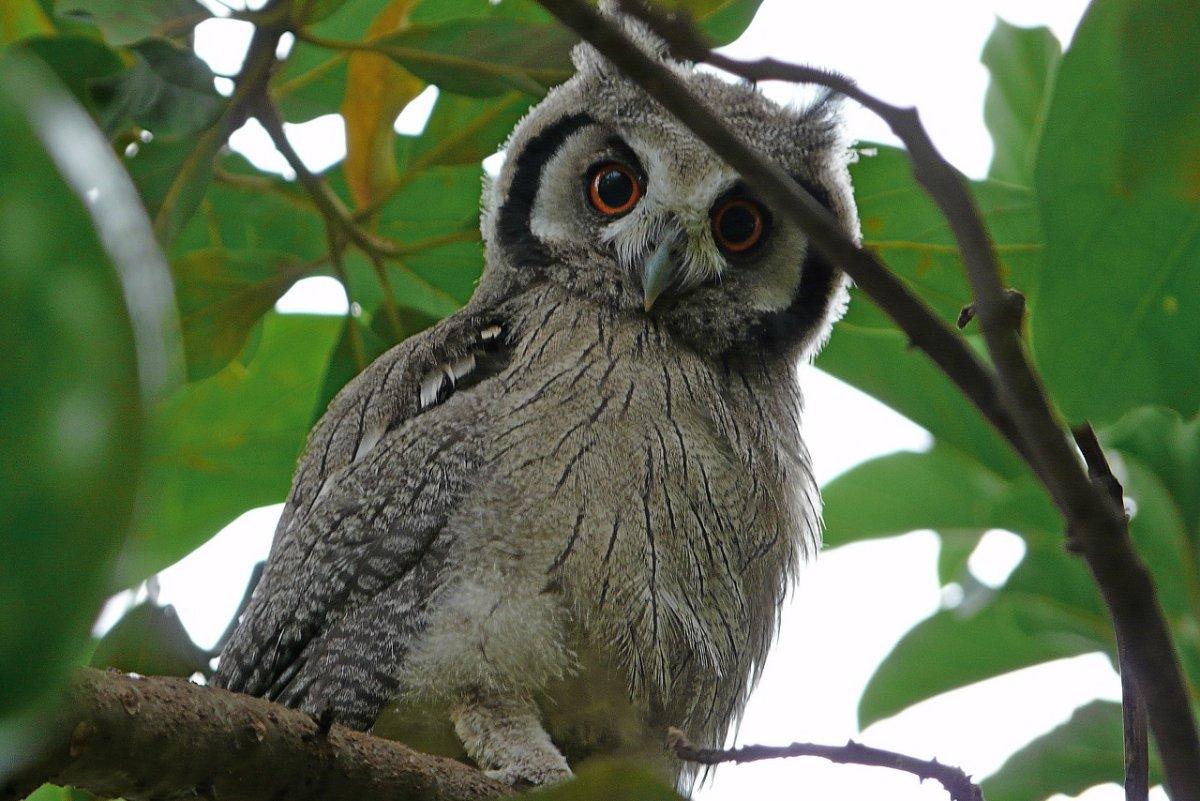
- Name: Pemba scops owl
- Scientific name: Otus pembaensis
- Conservation status:
The Pemba scops owl is a medium-sized species of owl endemic to Pemba Island, off the coast of Tanzania. There, it lives in every wooded habitat, from overgrown plantations to wooded habitats.
Not much is known about this owl. It roosts in dense undergrowth during the day, and is active at night, hunting for insects. It is considered vulnerable to extinction because of its restricted range, as well as its declining population due to habitat fragmentation and loss.
16. Gray crowned crane
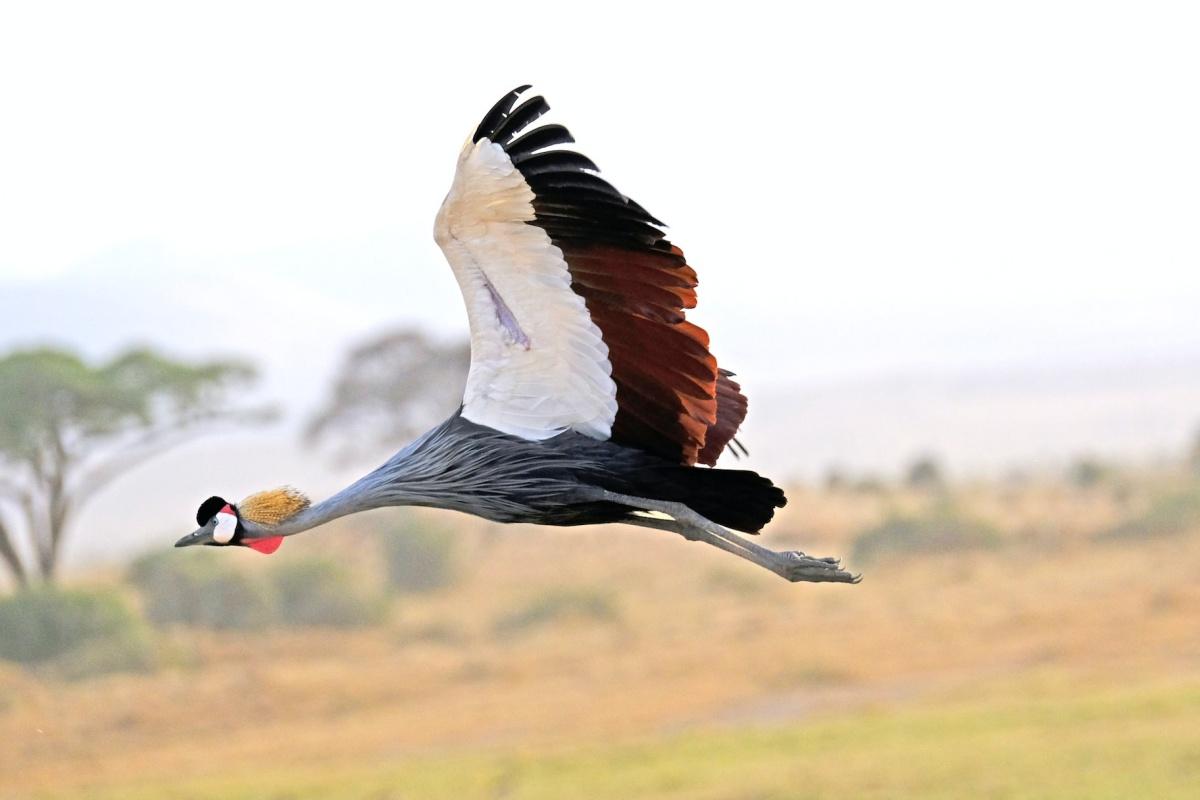
- Name: Gray crowned crane
- Scientific name: Balearica regulorum
- Conservation status:
The gray crowned crane, also known as the crested crane, the golden-crowned crane, the East African crane, or the African crowned crane, is a species of crane native to eastern and southern Africa. It is an important symbol within its range and is the national bird of Uganda.
This crane can mainly be found in the savanna biome of the Serengeti National Park in Tanzania. Generally speaking, it inhabits dry savanna and nests in wetter habitats, and feeds on plants, seeds, and grains, but also snakes, worms, frogs, and eggs.
17. Hippopotamus
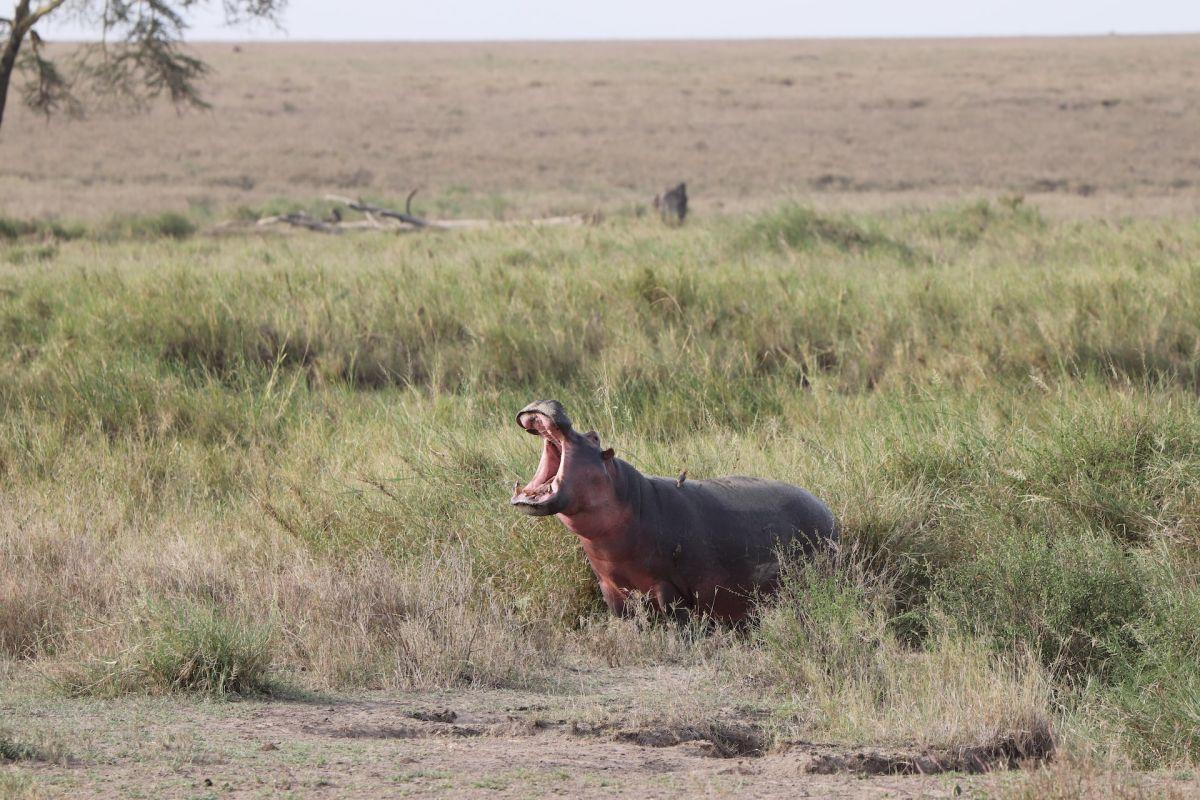
- Name: Hippopotamus
- Scientific name: Hippopotamus amphibius
- Conservation status:
The hippopotamus, also known as the common hippopotamus, the river hippopotamus, or simply the hippo, is a large species of semi-aquatic ungulate native to much of sub-Saharan Africa. Over the course of history, its range has drastically declined, and it can now be found in fragmented fractions of its former habitat.
Tanzania has one of the largest populations of hippopotamus in the world, with about 20,000 to 30,000 individuals, while their global numbers are estimated between 115,000 and 130,000.
18. Nile crocodile
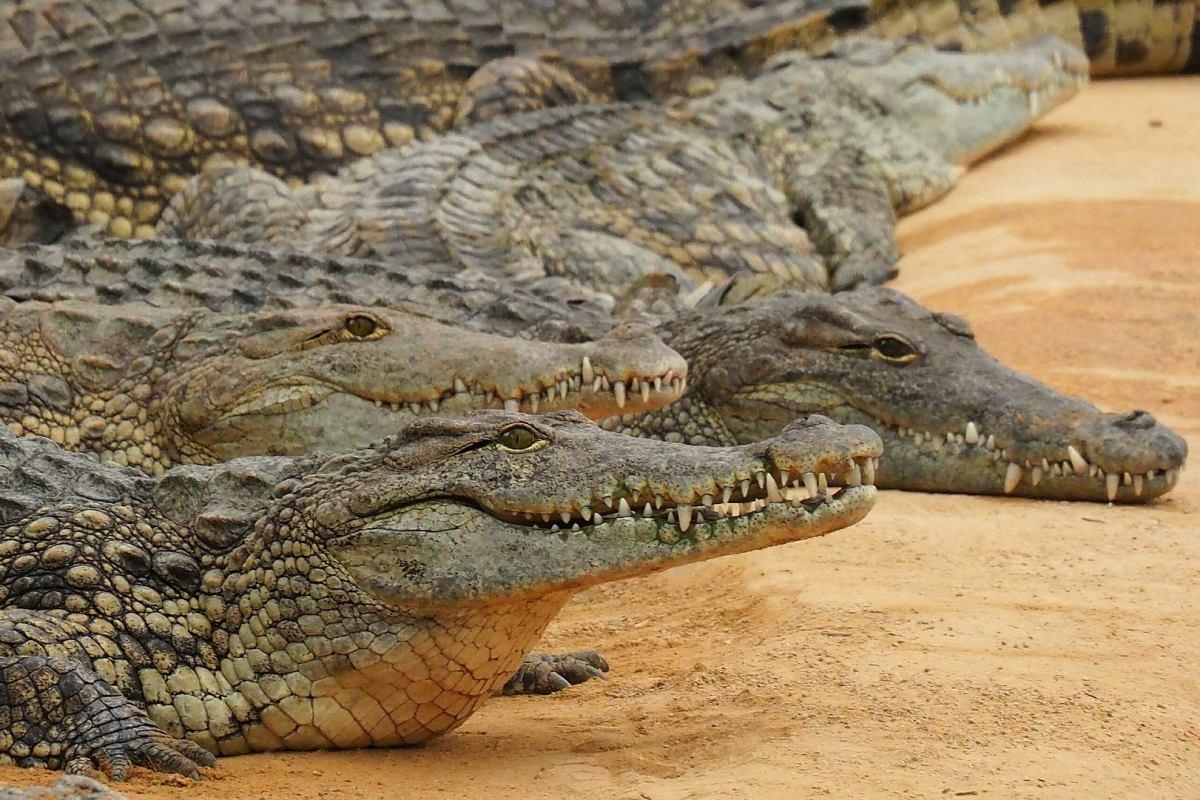
- Name: Nile crocodile
- Scientific name: Crocodylus niloticus
- Conservation status:
The Nile crocodile is a large species of crocodilian native to Africa. Despite its name, it can be found in 26 sub-Saharan countries, where it lives around deltas, lakes, and swamps.
This crocodile is very dangerous, especially in Tanzania, where more than a dozen fatal attacks have been recorded. It is particularly common in the country’s marshy lakes, and it can kill almost anything within its range, should it come a bit too close.
19. Southeast African cheetah
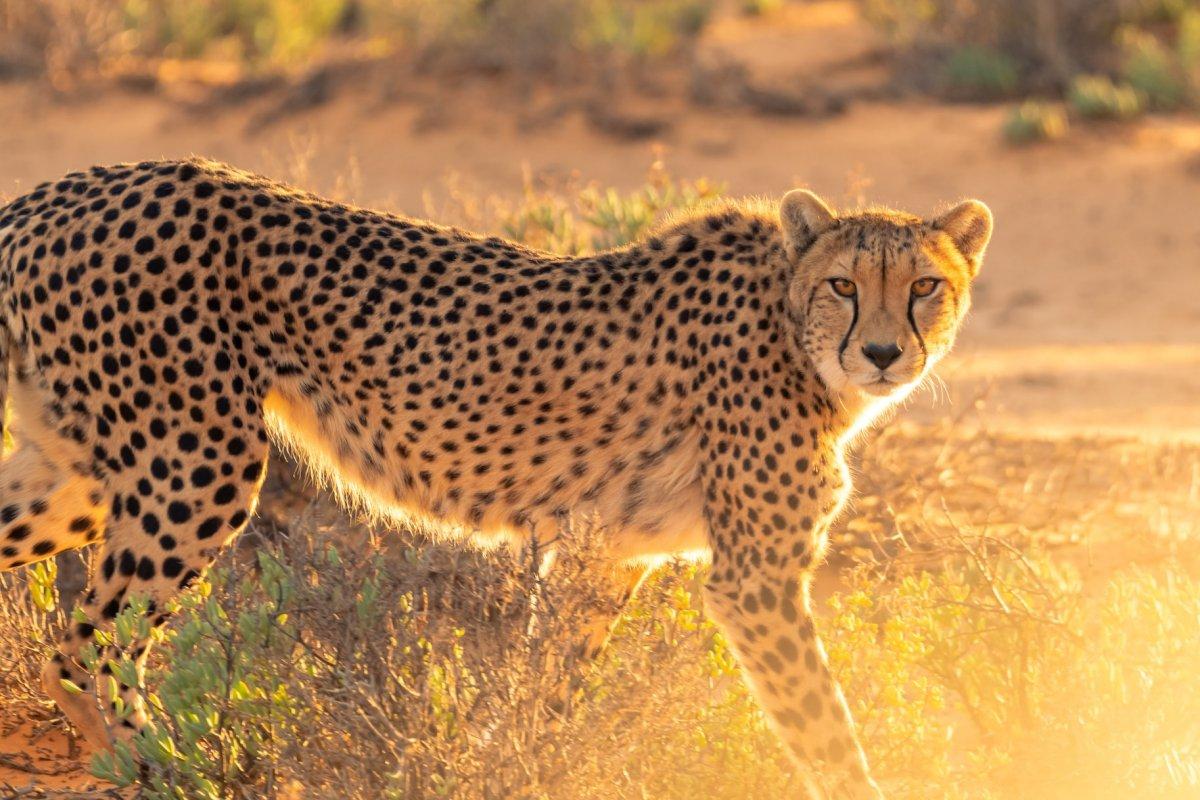
- Name: Southeast African cheetah
- Scientific name: Acinonyx jubatus jubatus
- Conservation status:
The cheetah is a large species of wild cat known for its athletic body and its tremendous speed, being the fastest terrestrial animal in the world and reaching outstanding speeds of up to 128 km/h / 80 mph.
In Tanzania, you will find the Southeast African cheetah, a subspecies of the cheetah. It mainly inhabits the lowland areas, grasslands, and savannas of the country, and preys on large ungulates such as antelopes and wildebeests.
20. Leatherback sea turtle
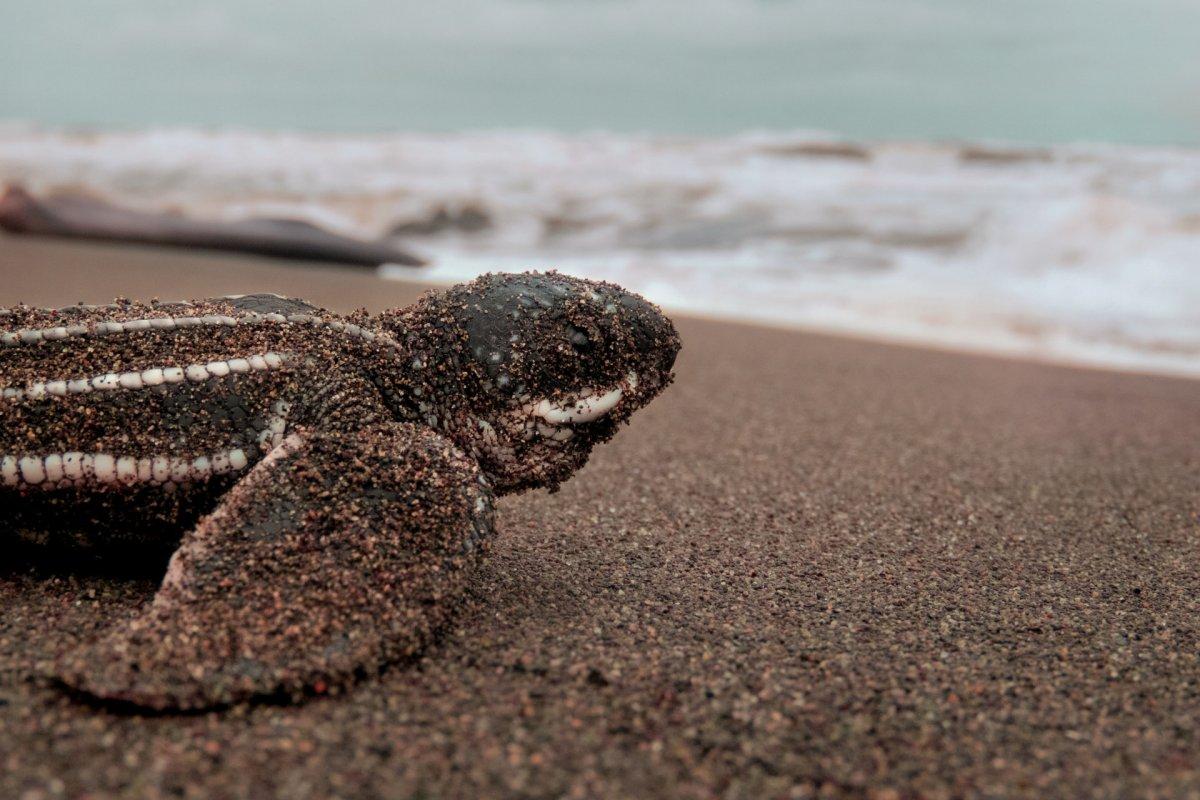
- Name: Leatherback sea turtle
- Scientific name: Dermochelys coriacea
- Conservation status:
When thinking of very large and impressive animals, you are most likely picturing a mammal… but do not discount the leatherback sea turtle, one of the most incredible animals you could see in Tanzania!
Also known as the leathery turtle or simply the luth, it is an animal of records, reaching incredible lengths of up to 1.8 m / 5.9 ft and weights of up to 500 kg / 1,102 lb, making it the world’s heaviest non-crocodilian reptile!
—
So there you have them, these were my 20 wild animals Tanzania has on its land. I hope you enjoyed this list and that you learned something new today.
In case you want to learn more about Tanzania wildlife, feel free to keep reading, as I still have lots of things to tell you about:
Endangered Animals of Tanzania
This is definitely the saddest part of the list, but it is very important to raise awareness. Because of this, let’s go through the list of endangered animals in Tanzania.
Here are the animals in danger of extinction in Tanzania.
- Pangani haplo
- Labeo worthingtoni
- Nectophrynoides asperginis
- Matilda’s horned viper
- Pancake tortoise
- Black rhino
- Victoria tilapia
- Slender-snouted crocodile
- and 106 more…
- Tanzania screeching frog
- Udzungwa forest partridge
- Sokoke scops-owl
- Spiny-sided chameleon
- Chimpanzee
- and 131 more…
To see the full list of endangered species in Tanzania, head over to the International Union for Conservation of Nature’s Red List.
What is the National Animal of Tanzania?
The national animal of Tanzania is the Masai giraffe.
Not only is the Masai giraffe of particular cultural importance in Tanzania, but the country is also home to the largest population of these animals in the world. Sadly, they are seriously threatened by human expansion, which implies habitat fragmentation and loss, as well as poaching for bushmeat and traditional medicine and severe droughts.
This giraffe is a popular tourist attraction and represents the peacefulness and wilderness of Tanzania, a country of many colors.
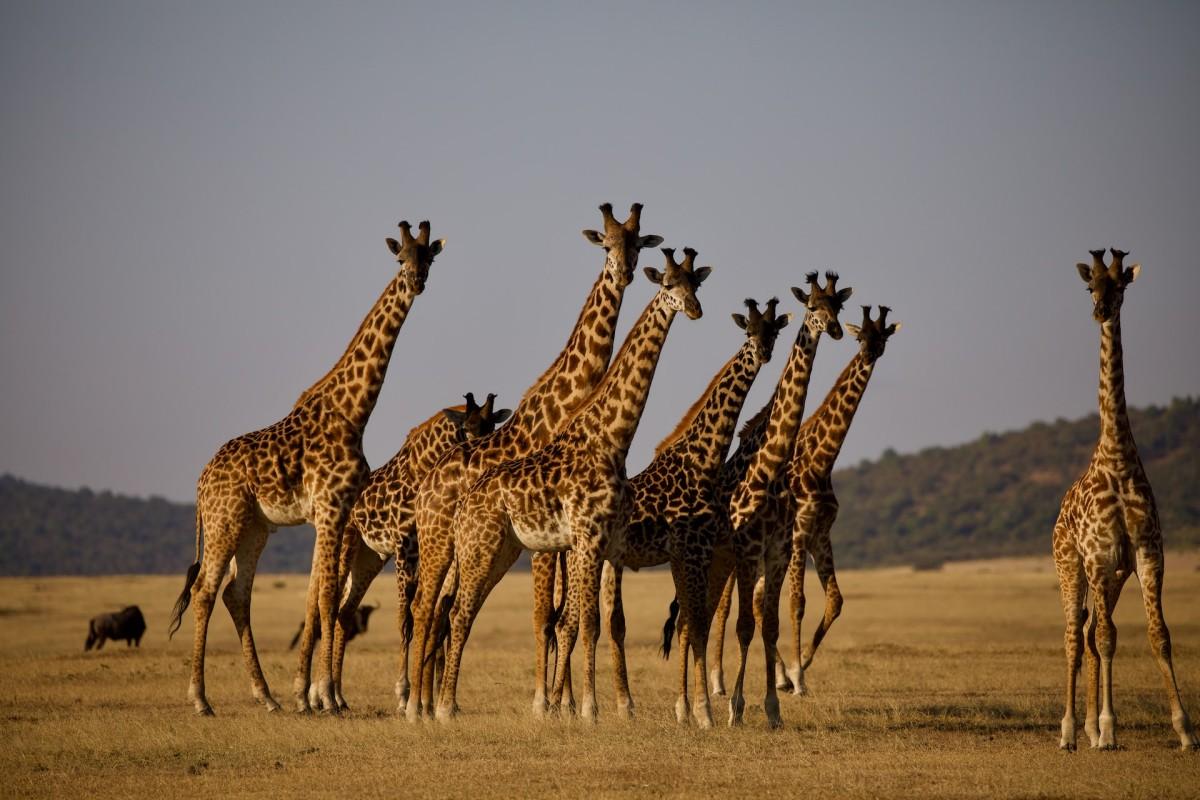
How Many Animals Native to Tanzania?
What is the diversity of native animals in Tanzania?
Let’s look at the total number of species of Chordata (mammals, birds, fishes, and reptiles).
Total number of animal species in Tanzania: 4,177 (14,205 in total in sub-Saharan Africa)
What is the most common animal in Tanzania?
There are quite a few fairly common animals you will see in Tanzania, but the most common of them all is the blue wildebeest, with about 1,300,000 individuals within the country, and a total number of around 1,550,000 in the world.
The blue wildebeest, also known as the brindled gnu or the white-bearded gnu, is a large species of antelope with a bovid appearance. It lives in large herds and migrates through sub-Saharan Africa every year.
More About Animals in the World!
Loved these Tanzania animals facts? Want to see what animals live in other countries?
Then check out these posts:
Or click here to see ALL the facts up on the blog! Spoiler alert: there’s A LOT of them.
Share the knowledge! Click on the buttons below to share information about these famous animals found in Tanzania with your friends, and help them learn more about the world 🙂

![30 Wild Animals in Saudi Arabia [Wildlife in Saudi Arabia]](https://www.kevmrc.com/wp-content/uploads/2022/08/30-wild-animals-in-saudi-arabia.jpg)
![13 Wild Animals in Sierra Leone [Wildlife in Sierra Leone]](https://www.kevmrc.com/wp-content/uploads/2022/12/13-wild-animals-in-sierra-leone.jpg)
![19 Wild Animals in Queensland [Wildlife in Queensland]](https://www.kevmrc.com/wp-content/uploads/2023/01/19-wild-animals-in-queensland-australia.jpg)